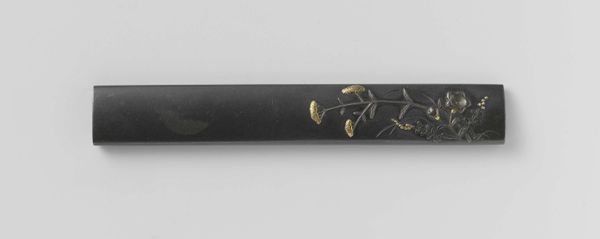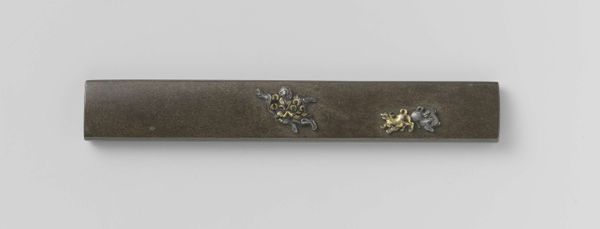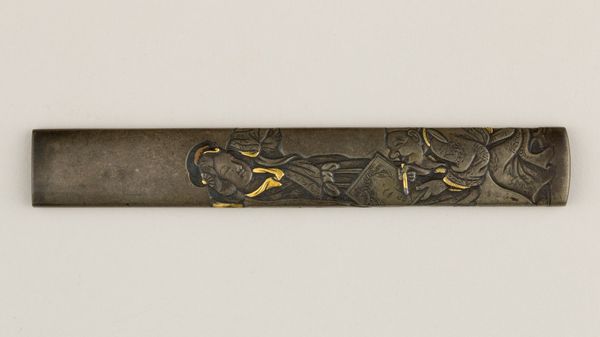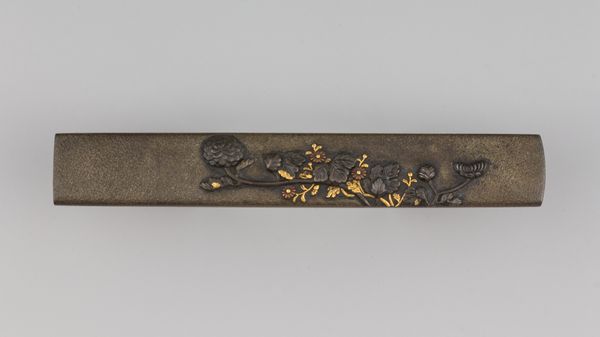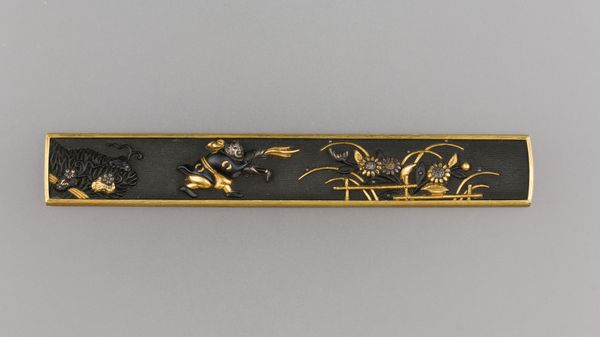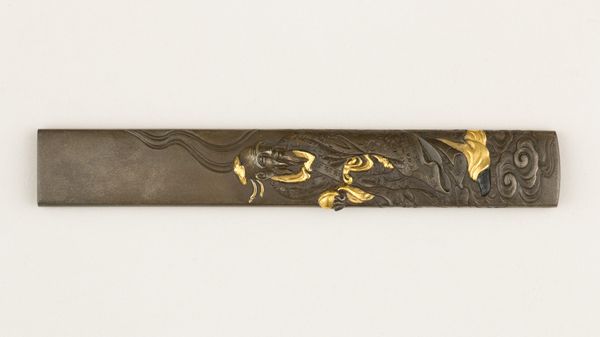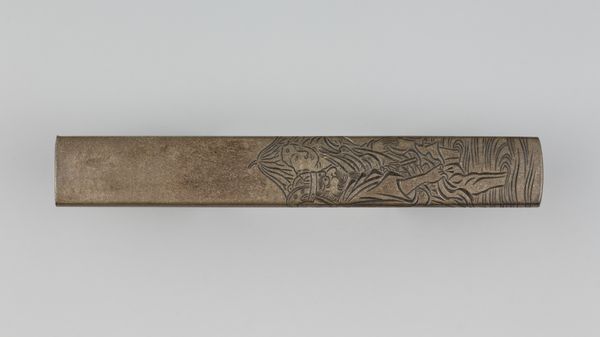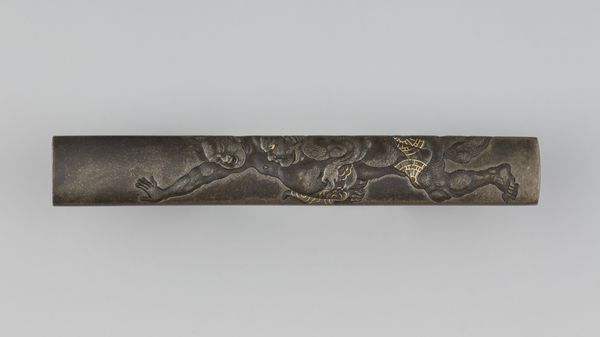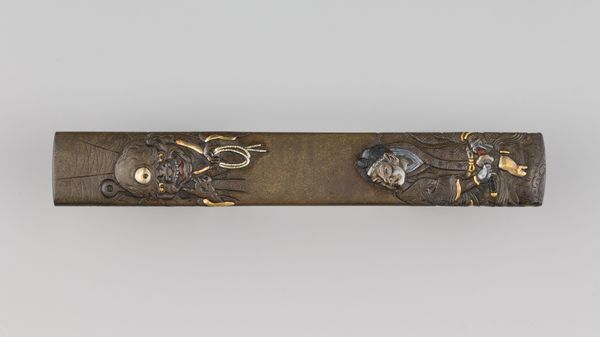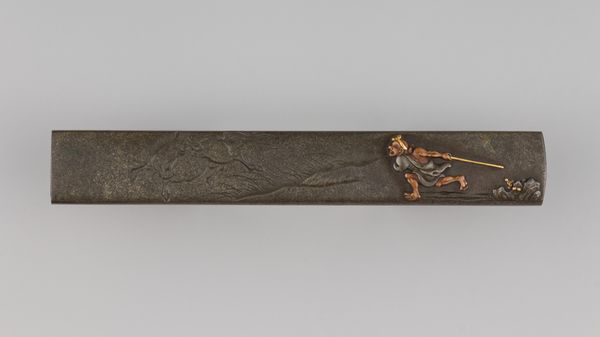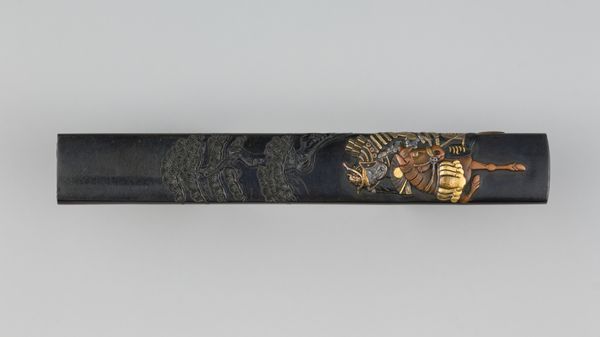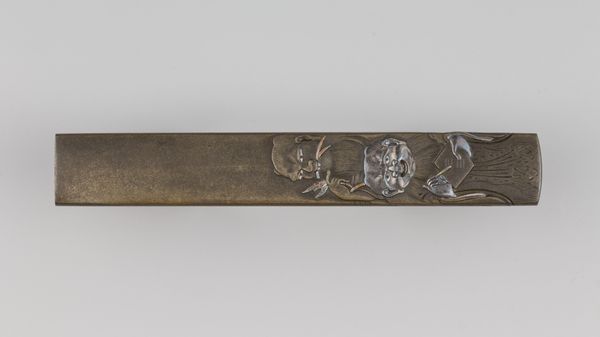
carving, metal
#
carving
#
narrative-art
#
metal
#
asian-art
#
figuration
Dimensions: height 9.8 cm, width 1.4 cm
Copyright: Rijks Museum: Open Domain
Curator: Here we have an intriguing sword knife hilt adorned with a depiction of a warrior wielding a bow. We estimate its creation between 1750 and 1850, rooted within Asian artistic traditions, showing use of metal and carving techniques. Editor: The first thing that strikes me is how the dark metal of the hilt contrasts so sharply with the gilded figure. The entire composition is quite compact, like a compressed epic. Curator: It's compelling, isn't it? The choice of subject matter--a warrior, his bow drawn--tells us a lot about the potential cultural narratives circulating during that period. War and militarization were often romanticized. What is perhaps absent from these martial depictions, and others of the period, are images of the common soldiers forced to engage in war. Editor: Exactly. And to take that a little further, who created the piece, and for whom? Was this perhaps intended for an elite clientele who might see their own power reflected back at them in miniature? Was it perhaps worn, brandished even? A tiny golden god of war hanging at their hip? What story was it intended to tell through this little object? Curator: Indeed. And while we can analyze the historical implications, let's not overlook the material artistry. The fine metalwork carving, bringing forth a scene of a poised warrior. You get a sense of the weight of tradition and power being evoked through a handheld object. Editor: It certainly captures a particular kind of masculine ideal that would be fascinating to unpack, given the potential historical moment it emerged from. I keep thinking about how it could act as a key to a broader conversation about martial arts, class structures, and visual rhetoric within society at the time. Curator: It brings up complex dialogues that the art provokes. Editor: Yes, exactly, its small scale shouldn’t deceive us from understanding a small symbol can bear enormous cultural significance. It has a lot to teach us about who we were, or who we strived to be, and maybe what that might tell us about ourselves today.
Comments
No comments
Be the first to comment and join the conversation on the ultimate creative platform.

